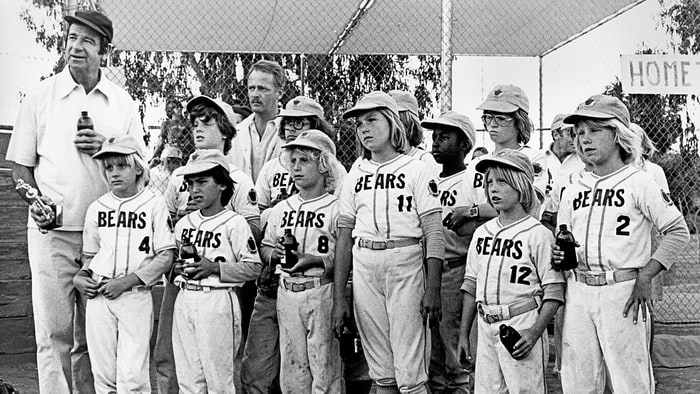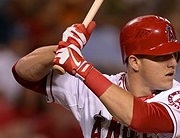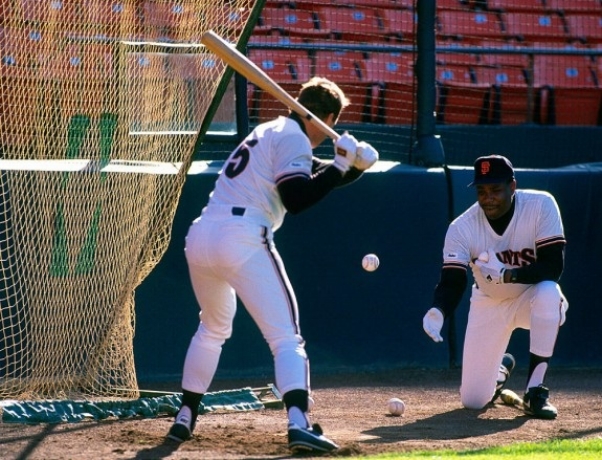Will Your Child Succeed As A Hitter This Spring? …a step-by-step approach to building the swing (part 1 of 3)
/Is your ballplayer going to maximize their potential as a batter this season? What can you do to help? What does it take to get ready?
Take them to the batting cages and crank up the pitching machine or get out to the park and throw as many pitches as your arm can handle. This is the way to get a player ready to be a hitter, as most people believe…pitch, pitch, pitch, swing, swing, swing.
The fact is however, swinging at live pitches is the last step in getting a player ready for the season. Developing the swing and/or getting the swing back in shape is a step-by-step process that begins with drills to develop muscle memory and working off a batting tee, working up to taking swings against live pitches.
The information in this article, the first in a three-part series, guides a beginner or novice player in their learning and preparation, while it serves a fundamentals checklist for a more experienced batter.
Live Swings
Kids, of course, want to immediately start whacking away at live pitches. Swinging at live pitches is the ‘Icing on the Cake’ of the process. The primary function of live swings is for a batter to get their timing down.
Prior to getting into live swings, a batter wants to establish consistency in the fundamental aspects of their swing using a tee, soft toss and short front toss drills. This doesn’t mean we can’t let our kids have some ‘fun time’ swinging at live pitches, but we make that the last part of the batting session, with no instruction. Again, live batting is for timing, not for teaching. Feedback given to a batter during a live session is limited to reminders of points they have learned in the controlled environment of muscle memory drills, tee work, soft toss and front toss. (Instruction points for live swings will be noted in the final two parts of this series.)
Tee Work
High School, College and Pro batters put in a lot of time working on their swing using a batting tee (it’s a good idea that youth players do the same). The tee is a life-long training tool for baseball and softball players.
Show your young batter 30-40 seconds of this video featuring former MVP Josh Hamilton working with a tee. This is an important education for kids; to understand that the tee is not just for Tee-Ball, but is, in-fact, a training tool used throughout one’s playing career.
Two important points when working with a Batting Tee:
1. Stance*** in Relationship to the Tee
- Front foot even with the tee stem/ball
- One bat length from the ball (not bat and arm length)
2. Each Swing has a Purpose
Make one aspect of the swing the focus for a series of 8-10 swings. Take a brief rest break (spend 20-30 seconds picking up balls), then switch to a different focus point.
The five points below establish the three foundations needed to move to more advanced drill work: Using the Legs, Head Control and Balance. These are covered in detail in the following sections of the article.
- Turn Back, (Load), Turn Fast (Legs/Lower Half of the Body)
- "Switch Heels" - same as number one, but with a more specific focus
- Head in Place/Head Down
- Feet in Place - at the conclusion of the swing (always full speed) ...are feet still in place? or did the batter allow the momentum of the swing force them to move one or both feet to a different spot than where they were during the swing?
- Centered and Tall - complete the swing (always full speed), then confirm the head, torso and hips are straight up and down (tall) and centered between the feet.
The first two points are physical actions the batter addressing in their swing. They are pretty much the same. The difference is, #1 is a general focus of the entire lower half; #2 is a specific action that creates the leg/hip turn.
The other three are ‘checkpoints’ after the swing. These three points are characteristic of any fundamentally sound swing. Many swings made by young players are missing one or more of these three elements. The simple act of correcting these points can significantly improve a batter’s swing (over the course of a few workouts) with no technical instruction given. At the completion of each swing, the batter checks to see if they executed the focus point. If not, they make a more determined effort in their next swing.
To accomplish any of these points, the batter is forced to execute a better swing. The adjustments are not made because of a deep understanding of the swing or a conscious technical change. By consciously working to achieve one of this points at the conclusion of the swing, the body will naturally produce a better swing. In some cases the swing will improve after just a few repetitions. In other cases, improvement will be seen after 2-3 workouts.
Two final points
- The batter and instructor evaluate only the quality of achieving the objective, the single focus point. The result of how well the ball was hit (if it is hit at all) is not something we evaluate at this point.
- Do not discuss other flaws in the swing; likely there will be many. Remember, developing the swing (or shaking off the rust) is a step-by-step process.
The adjustments are not based on instruction or thinking. The batter simply attempts to fulfill the single objective. The value in this is the batter is improving their swing without thinking through the swing based on the verbal instruction from the coach/adult.....which often leads to confusion and/or frustration.
This 50-swing workout is plenty for one day. After the tee work, reward them with live pitches, but I suggest we make this part of the activity ‘fun time’ with no instruction.
If our player struggles during the live session, that sets us up for selling the value of the tee work, “Hey, its early, we’ll keep working on the tee and soon you’ll be hitting the ball better”.
***Grip and The Back Elbow
These two aspects of the batting stance are misunderstood and often viewed as ‘fixes’ for a batter who is struggling.
The most important thing in the grip is to have the hands together. Right hand batters have their right hand on top; left handers, left hand on top. The popular myth is that a batter lines up their middle knuckles. For some batters this works well. Other batters line up their middle knuckles with the first knuckles (where the fingers meet the hand). Most batters’ knuckle alignment is somewhere in between. Somewhere between knockers and box
“Keep Your Back Elbow Up” is often heard from helpful parents and coaches. Elbow placement in the stance varies from batter to batter. There is no magic in having the back elbow up in the stance. The idea of a batter wanting to keep their ‘elbow up’ originates, as I understand, from the fact that this position makes it easier for a young child to support the weight of the bat when holding it prior to starting the swing.
Fundamental Focus Points to Begin With
1. Lower Half Turn (“Turn Back, Turn Fast”) …see ‘Batting is Like Jumping', six posts below
The legs initiate the swing action and provide the energy and momentum for the swing itself. Many kids do not
realize the legs are part of the swing; not to mention their importance. An action to focus on during Tee Work (soft
and front toss as well) is the "Switch Heels" action.
Before working on this action during Tee Work, first we want to train the muscles to perform this action by doing
the no-bat Switch Heels Drill (to develop muscle memory in the legs):
- Get in a batting stance (a good stance has the feet set a few inches outside the hips)
- Place hands on hips (all muscles in the chest, neck shoulders and arms remain relaxed during this drill).
- Have an object, which is even with the batters front foot and in the center of the strike zone, for the batter to look at throughout the action (keeping the head in place during the drill is very important, though difficult at first for most kids).
- The batter slightly turns their front knee back, resulting in their front heel coming off the ground. (Many batters have some inward turn of the upper body as a result of this action). Head remains fixed on the object referred to in #3.
- The batter then quickly drives their front heel down and back (the front foot finishes at approx. 45 degrees…there will be some variance from person to person)
...while executing this action with the front heel, the back heel turns up (in an actual swing, involving a bat, many
batters finish entirely up on the toe of their back foot)
This drill is simple to execute and repeat. A batter can repeat this action 10-15x in a minute. If practiced daily – yes
a minute is a big time commitment ;) - in just a few days, a young batter begins to FEEL their legs to powering the
swing action. This drill is also done prior to a batting practice session..
2. Switch Heels Drill
Take a set of swings with this action as the focus point.
Watch these videos of Albert Pujols (:00, :40, 1:35) and Mike Zunino (:03-0:18, 0:31) crushing Home Runs. The action of "Switching Heels" is very clear.
3. Head in Place / Head Down
Head facing the ball on the tee prior to the swing. Complete swing (always full speed) while keeping head looking at contact point (top of the tee) after the ball has been hit.
Movement of the head is a common flaw for kids when swinging the bat. A player can get top notch instruction and have a great mechanics, but if their head is moving the value of everything else is out the window. The body follows the head, when the head moves it throws off the whole swing.
Mastering the ability of power generation and completing a full swing, while at the same time keeping the 'Head in Place' takes some time, but a youth baseball player or softball player can accomplish this...and many can achieve a good level of mastery in a couple of weeks.
There second element in the foundation of a good swing, along with the Legs, is The Head. Before anything else, to build a fundamentally sound swing, a batter needs to
- Generate energy and power with their legs
- Keep their head in place
When “Head in Place” is the focus during Tee Work, the batter has their Head Down, facing the ball, in their stance. After hitting the ball the batter wants to then be looking at the top of the tee. Its simple for the batter to check if their head moved …either they are looking at the top of the Tee following their swing or they are not.
(Note: Keeping the head down until the conclusion of the swing is a ‘drill/focus point’ for a set of 8-10 swings. This is not something a batter does during a swing in normal circumstances. When executing a quality swing, the momentum of bat extension takes the back shoulder past the head forcing the head off contact point. However, a high level batter has their head down at contact an for a few brief moments after the ball leaves the bat.)
4. Feet in Place
A lack of leg strength is a reality for most youth baseball and softball players – and kids in general. Often when completing a swing, young players lose balance and reposition their feet (this is not to be confused with ‘stepping in the bucket’ prior to the swing). This repositioning of the feet to regain balance, following the swing, is generally a result of one, or both, of these factors:
- Using the upper body (primarily the shoulders) to initiate the swing action
- The momentum of the bat in the final stages of the swing
When a batter feels off balance at the end of their swing, we ask them to keep their “Feet in Place” and make every effort to re-balance themselves without repositioning their feet. When this adjustment is made it sends a message to the muscles that balance is the goal. Through repetition, the muscles learn to be more balanced and effective during the swing.
While each point discussed here is are a high priority, it can be argued that “Feet in Place” is most important. When doing this, a batter maximizes the power in their legs and minimizes unnecessary body movement during the swing. A batter who executes a swing with the combination of:
- Legs Turn Fast
- Head in Place
- Feet in Place
…will find it difficult to have a poor swing.
(Note: in each swing the batter wants to turn their legs/lower half at full speed and swing the bat full speed (most of the swing effort is made with the legs and hands/wrists). The faster the swing action, the more accurate the swing – this will be addressed in the next two parts of this series.)
5. Centered and Tall
When in their stance, a good batter’s head is pretty much centered between their feet. At the end of their swing, their head is still centered between their feet. In addition to their head, a batter’s torso is also centered, while their posture is ‘tall’ (head, torso and hips aligned, vertically, with the back knee, at the conclusion of their swing.
Many young batters are bent over at the waist during, and following, their swing. Others allow their torso to ‘sway’ forward during the swing. The torso of accomplished batters is centered, straight and tall at the conclusion of their swing (some stronger batters may have slight tilt back at the conclusion of their swing).
Practice Session
- Switch Heels Drill 15-20x
- Take 10 swings each, following the five focus points above - for a total of 50 swings
- Live swings (just for fun)
The Next Step
The path of hands is added to our workouts once the batter has gained some level of proficiency in using their legs and establishes some consistency in the focus points mentioned in the article.
Since there is more to learn and practice, the swing will have some flaws. In the next two articles in this series hand path is covered along with utilizing Soft Toss, Front Toss and Swings Against Live Pitching.

















